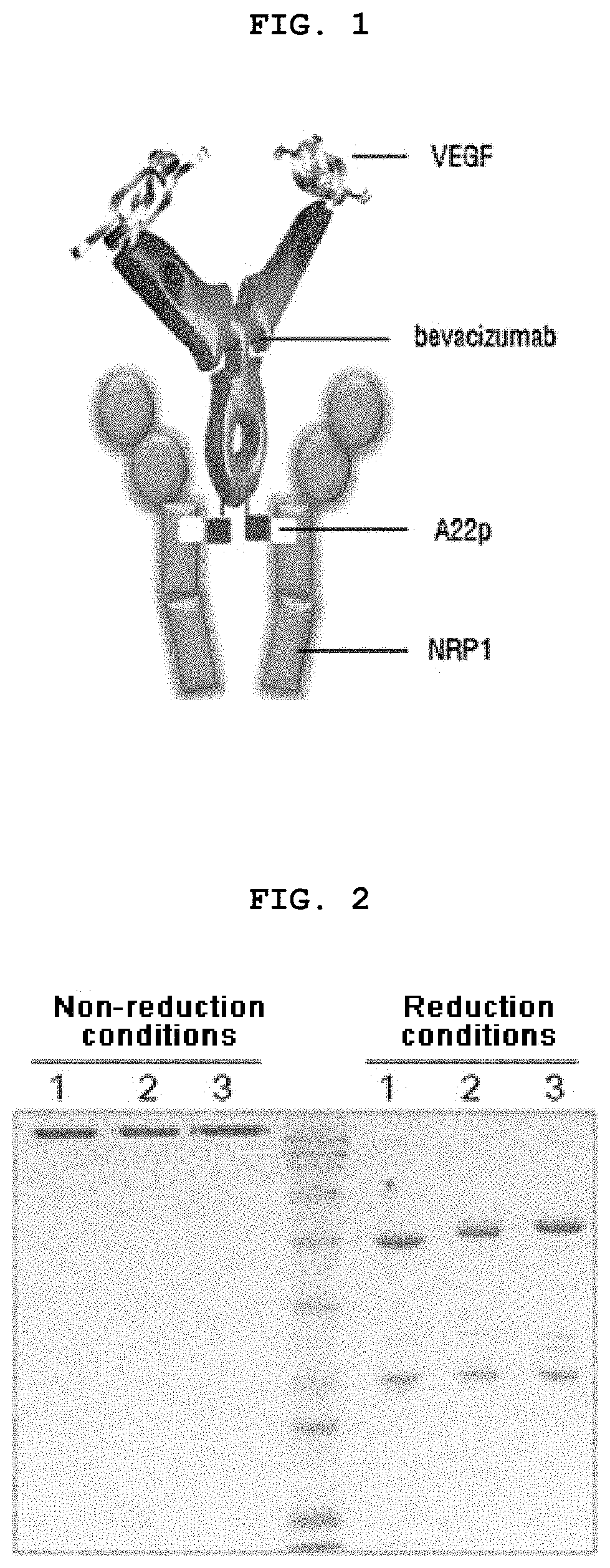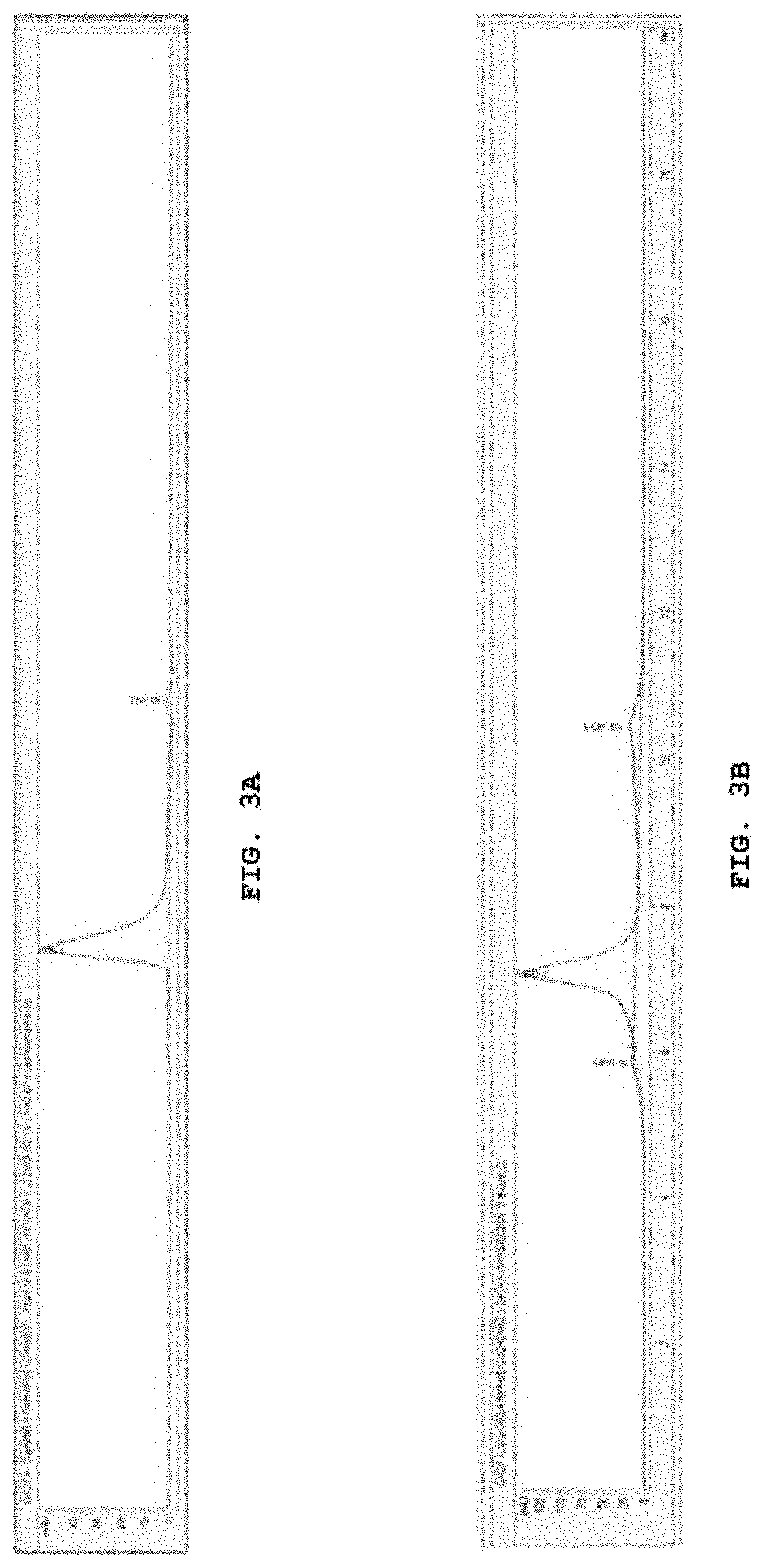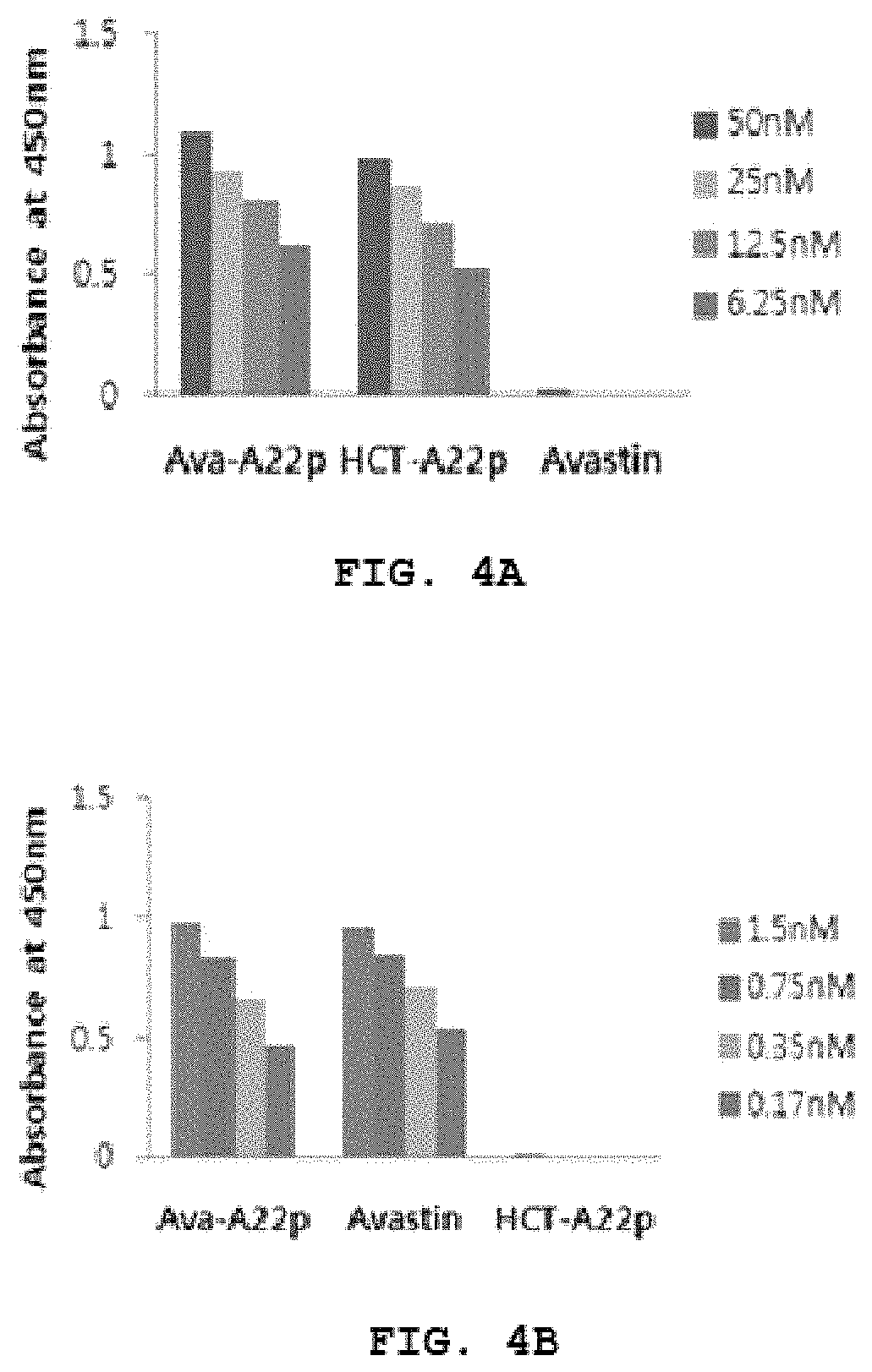Pharmaceutical composition containing, as active ingredient, fusion protein in which tumor-penetrating peptide and anti-angiogenesis agent are fused, for preventing and treating cancer or angiogenesis-related diseases
a technology of angiogenesis and fusion protein, which is applied in the direction of peptide/protein ingredients, antibody medical ingredients, peptide sources, etc., can solve the problems of dose-dependent side effects of anti-vegf agents, insufficient angiogenesis is a cause of coronary artery disease, stroke, myocardial infarction, etc., to improve tumor penetration of anti-angiogenic agents, improve anti-angiogenic effect, and excellent treatment
- Summary
- Abstract
- Description
- Claims
- Application Information
AI Technical Summary
Benefits of technology
Problems solved by technology
Method used
Image
Examples
example 1
on of Avastin-Tissue-Penetrating Peptide (TPP) Fusion Protein
[0126]For increasing efficacy and overcoming resistance with respect to an anti-VEGF agent, Avastin, the present inventors have attempted to fuse a tissue-penetrating peptide (TPP), which is capable of binding to both neuropilin 1 (NRP1) and neuropilin 2 or specifically binding only to neuropilin 1, to the C-terminus of Avastin. The amino acid sequences of TPP are shown in Table 1 below. Among the sequence listing on Table 1, TPPs having the amino acid sequences of SEQ ID NO: 1 to SEQ ID NO: 4 can bind to both neuropilins 1 and 2, while TPPs having the amino acid sequence of SEQ ID NO: 5 to SEQ ID NO: 7 can bind specifically only to neuropilin 1. A schematic diagram of a fusion protein in which TPP is fused to Avastin is shown in FIG. 1.
[0127]Avastin as used herein is a peptide having the amino acid sequence of SEQ ID NO: 13 for a heavy chain and the amino acid sequence of SEQ ID NO: 11 for a light chain, and used for the ...
example 2
bility of Avastin-Tissue-Penetrating Peptide (TPP) Fusion Protein to NRP1 and VEGF
[0140]In order to evaluate whether the N-terminus of the fusion protein Avastin-A22p as prepared in Example 1 may bind to VEGF in the same manner as Avastin while its C-terminus may bind to NRP1 to thus dually block the associated signaling, the binding of Avastin-A22p with NRP1 and VEGF was respectively evaluated.
[0141]The binding ability of the purified Avastin-A22p to Neuropilin 1-b1b2 domain was investigated in enzyme-linked immunosorbent assay (ELIA). Herceptin-A22p (HCT-A22p) as a positive control and Avastin (Roche co., Swiss) as a negative control were used. The target molecule Neuropilin 1-b1b2 domain (273-586) was reacted at 1 μg per well in the 96-well Maxibinding Immuno plate (SPL Life sciences., Korea) for 2 h at 37° C., and then washed with 0.1% PBST (0.1% Tween20, pH 7.4, 137 mM NaCl, 2.7 mM KCl, 10 mM Na2HPO4, 2 mM KH2PO4) for 1 min three times. After reaction with 0.1% PBST containing ...
example 3
rgeting Experiment of Avastin-A22p
[0145]It is known that Avastin is not a cancer-specific targeted drug, unlike other antibody medicines, and thus Avastin needs to be administered at a high dose for exerting efficacy and may be distributed in not only cancer tissues but also other tissues with a high level of VEGF, resulting in adverse side effects. Therefore, the use of the cancer-specific distribution of NRP1 is expected to increase the cancer targeting effect to reduce the dose, thereby increasing patient convenience and reducing dose-dependent side effects. The present inventors have attempted to evaluate whether Avastin-A22p can effectively target cancer.
[0146]In order to investigate whether Avastin-A22p is distributed better than Avastin in cancer cells by targeting NRP1 present in new blood vessels inside cancer tissues and cancer mass, when a tumor volume reached around 250 mm3 after SW620 (obtained from ATCC) was transplanted in nude mice, PBS, Avastin-A22p, or Avastin was ...
PUM
| Property | Measurement | Unit |
|---|---|---|
| body weight | aaaaa | aaaaa |
| body weight | aaaaa | aaaaa |
| pH | aaaaa | aaaaa |
Abstract
Description
Claims
Application Information
 Login to View More
Login to View More - R&D
- Intellectual Property
- Life Sciences
- Materials
- Tech Scout
- Unparalleled Data Quality
- Higher Quality Content
- 60% Fewer Hallucinations
Browse by: Latest US Patents, China's latest patents, Technical Efficacy Thesaurus, Application Domain, Technology Topic, Popular Technical Reports.
© 2025 PatSnap. All rights reserved.Legal|Privacy policy|Modern Slavery Act Transparency Statement|Sitemap|About US| Contact US: help@patsnap.com



